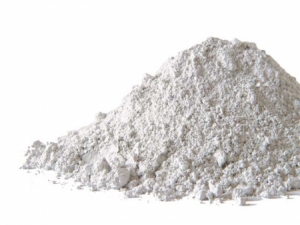Calium carbonate is also known as Chalk, limestone, calcite, Aragonite and marble.
it’s chemical formula is CaCo3. it’s pure appearance is fine white powder with impure appearance of white cream. It’s density is 2/71-2/83 g/cm3 and decomposes in 825 C. it has linear molecular shape and is inflammable.
Calcium carbonate is a white solid with the formula of CaCo3. it is a common substance found in rocks as the minerals calcite and Aragonite, limestone, marble and travertine all over the world., it is dissolved in water in very small quantities but in water containing dissolved CO2, it is completely dissolved in water and create Calcium carbonate. dissolution of Calcium carbonate in running waters with dissolved Co2, result in water hardness. Calcium carbonate is an exceptional mineral making up about 4% by weight of crust and it occurs all over the world. Calcium carbonate is one of the most widely used materials known to the human. this material could be produced synthetically, however it is the main component of shells of eggs and marine organisms like snail, crabs and even pearls. to be used in industry, Calcium carbonate is extracted from mines. pure Calcium carbonate could be produced from marble or could be created by passing Co2 through Hydroxide calcium solution.
Calcium carbonate history
the history of Calcium carbonate usage dates back to Before Christ epoch. from middle ages to industrial revolution and then to modern times, it has been used for various purposes.
Calcium carbonate has been used since 40000 years B.C. the history of Calcium carbonate indicates the uses of it’s unique properties in various applications ranging from prehistory cave painting to production of modern paper and plastic.
Anglo-Saxons mentioned chalk as “Hwiting-melu” means “whitening powder” and this is exactly what used for thousand years as a white pigment in paints, raw material and plasters.
Calcium carbonate is used as fillers in industries.
Fillers are particles added to liquids and solids to make some changes in material properties such as enhancing mechanical strength and ductility, increase and decrease in specific weight, enhancing thermal resistance, concentration change and prime cost reduction.
Calcium carbonate is used in paints, wood glue, plastic, rubber, floor, PVC sheets, adhesives and resin, cables and wires, polyethylene pipes, artificial leather, ink, paper, medicines, detergents, masterbatch, glaze, kenitex, profile and glazing, ceramics and tiles industries.
under heating, Calcium carbonate loses CO2 and turn into limestone which is used in construction, iron extraction and steel production as flux as well as for calcium carbide preparation. in agriculture, limestone is applied to modify soil and regulate soil pH. in medicine, Calcium carbonate is used as antacid to neutralize stomach acid.
Calcium carbonate is a non- or less hazardous chemical, eating or inhaling it, eye and skin contact (of course in short time) does not pose a risk for human. Calcium carbonate is rather insoluble in water, but in water containing CO2 or high quantities of ammonium soil, it is dissolved slowly. it is rather insoluble in alchohol and boils in asetic acid, hydrochloric acid and nitric acid. it has antacid property and is used in kidney failure and osteoporosis treatment as a calcium supplement. Calcium carbonate is recommended for patients with hyperphosphatemia along with kidney failure, because by binding to phosphate, hinders phosphate absorption through stomatch and intestine. Calcium carbonate is also used in Homoepathic medicines and food additives. in addition, given adsorption property, it is used in antidiarrhoeal drugs. solved in stomach acid, turn into calcium chloride and the resulting Co2 may cause tympanites in many patients. some calcium is absorbed in gastrointestinal tract, but about 85% is excreted as calcium salts such as Calcium carbonate.

